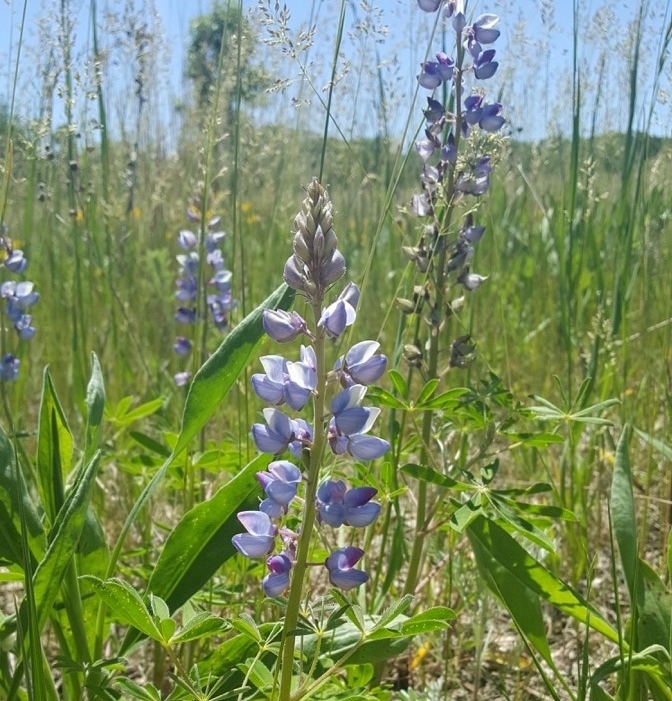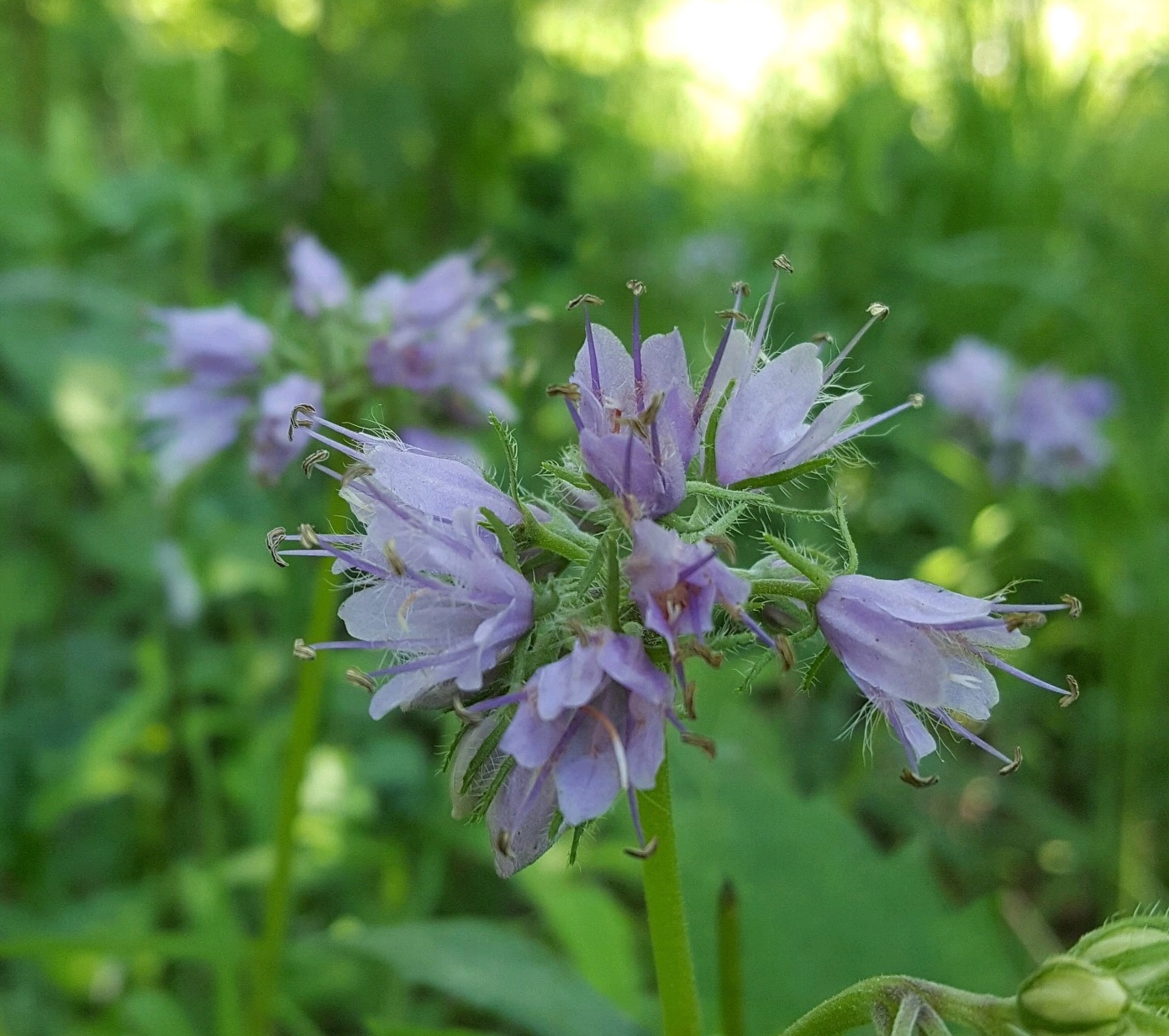Flower Power

By: Aimee Junget
As our crew has been romping around the woods picking garlic mustard, spraying vetch, and surveying habitats, I have been drawn to the many colors wildflowers bring to our landscape here in Minnesota. At first, I would continually pull out my phone every time I saw a flower. “Ok, Google, what is a purple Minnesota wildflower that blooms in spring?” It only took a couple instances of scrolling through hundreds of pictures of purple wildflowers while squinting through the glare of the sun off my phone screen before I hopped on Amazon and ordered my very own field guide (Stan Tekiela’s Wildflowers of Minnesota Field Guide). Now I revel in the constant scavenger hunt in the woods. I am even raising a couple native wildflowers, Hoary Vervain and Meadow Blazing Star, of my own right in my backyard. It is safe to say I have become a full-on enthusiast.
So this post is a tribute to all of our native wildflowers out there–not only making our state beautiful, but also contributing to natural ecosystems and biodiversity. Below are eleven lovely wildflowers we have in our state and some fun facts about them (once again, thanks to my handy field guide).

Four-O’Clock, (Mirabilis nyctaginea) Habitat: wet or dry, sun or shade, highly adaptive. Range: throughout Minnesota. Fun little plant with a fun little name as it blooms late in the afternoon.

Blue Flag Iris (Iris versicolor). Habitat: edges of wetlands, lakes, and rivers. Range: Throughout Minnesota. I spotted this flower at B.F. Nelson Park near Boom Island in Northeast Minneapolis. I watched as a pollinator passed under the plant’s male and female parts, completing pollination for this particular wildflower.

Wild Lupine (Lupinus perennis) Habitat: dry, sandy areas, fields, or prairies. Range: Southeastern half of the state. I captured these beautiful lupines in the prairies of Wild River State Park.

Spiderwort, (Tradescantia occidentalis). Habitat: dry, sun, meadows, prairies. A rather ugly name for a rather beautiful flower. Odd fact: When exposed to pollution the flower turns from a blue to a purple.

Virginia Waterleaf, (Geranium maculatum) Habitat: deciduous forests. Range: throughout the state, except for the northern edge. Early to bloom and one of the most prevalent I have seen in city and state parks alike.

Red Columbine, (Aquilegia canadensis) Habitat: rocky places, deciduous woods, shady areas. Range: throughout Minnesota. I was stunned with beauty as the tiny flowers clung to the cliffs of Interstate Park with the St. Croix River down below.

Starflower, (Trientalis borealis) Habitat: wet, shade, both conifer and deciduous woods. Range: Northern part of the state. Representing for the northern half of the state, these Starflowers were scattered all over my cabin on the Iron Range.

Prairie Smoke, (Geum triflorum). Habitat: sun, prairies. Range: throughout Minnesota where prairies are present. This wildflower is one of the earliest to bloom in prairies in the spring. The flower hangs like a bell until pollinated, upon which it stands up and waves its seed head like smoke in the wind.

Daisy Fleabane, (Erigeron annuus) Habitat: Another highly adaptable plant growing in for conifer or deciduous woods. Range: Eastern half of the state. The genus name Erigeron combines the Greek words for early and old man, for the fact that it blooms early in the spring and gives the appearance of a balding, silvery head.

Large Beardtongue, (Penstemon grandiflorus). Habitat: sun, dry prairies. Range: throughout the state. A sight to see in the prairies at Wild River where our crew is removing vetch.

Canada Anemone, (Anemone canadensis) Habitat: wet meadows, prairies. Range: throughout Minnesota. A large patch of these little ones lined the boat launch into the St. Croix at Wild River State Park.